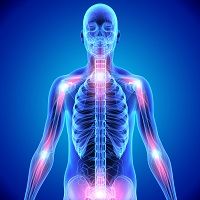Plasma Exchange May Be Effective Treatment for CRPS
Complex regional pain syndrome (CRPS) is one of the pain conditions that has remained fairly mysterious, but a new, effective treatment may be on the horizon. It is known that CRPS most often develops following trauma, however, and evidence suggests a maladaptive response to nervous system damage involving immune and inflammatory pathways as well as abnormalities in both peripheral and central processing of afferent inputs. No single therapy – including pharmacologic therapy – wholly addresses the condition.

Complex regional pain syndrome (CRPS) is one of the pain conditions that has remained fairly mysterious, but a new, effective treatment may be on the horizon. It is known that CRPS most often develops following trauma, however, and evidence suggests a maladaptive response to nervous system damage involving immune and inflammatory pathways as well as abnormalities in both peripheral and central processing of afferent inputs. No single therapy — including pharmacologic therapy – wholly addresses the condition.
Clinicians and researchers have seen some positive effect of intravenous immunoglobulin (IVIG) treatments for patients with CRPS. A study in Pain Physician looked at another treatment option, plasma exchange (PE) therapy and found that it has potential in certain patients when used in combination with other therapies.
The researchers had first tried IVIG for four patients with CRPS, but treatment was only successful in one of the four patients. Inspired by the idea that CRPS patients may present with symptoms suggestive of a small fiber neuropathy, however, the researchers embarked on a retrospective case series study of 33 patients with CRPS who received PE treatment at Drexel University between September 2012 and June 2014.
PE is an extra-corporeal therapy that comprises the extraction of the patient’s whole blood, which is then separated into plasma and blood cells. The plasma is removed and replaced with another solution, such as human albumin in saline or specially prepared donor plasma. The reconstituted plasma substitute, along with the blood cells, is then returned to the patient.
The workup for these patients consisted of a complete medical and pain evaluation, the completion of the short-form McGill questionnaire, quantitative sensory testing (QST), and skin punch biopsy. The PE protocol was as follows: all patients had a series of PE therapies (range five to 11 with a mean of 7.2) performed over a two to three week period. Following the PE series, the patients had a pain evaluation and completed the short-form McGill questionnaire. During the PE, patients continued their medication therapy with no change and no new medications were started. Patients that responded to PE were offered maintenance therapy consisting of either weekly PE or other immune modulating agents.
Thirty of the 33 patients demonstrated significant (P < 0.01) median pain reduction of 64% following the initial series of PE. Twenty-four patients are receiving maintenance therapy; the pain reduction in these patients following the initial PE series has been maintained with either weekly PE (n = 15), oral immune modulating agents (n = 8), or IVIG (n = 1). The remaining six patients are not receiving maintenance therapy, and their pain has returned to pre-treatment levels.
The study authors noted that they are unsure the mechanism by which PE reduces pain in CRPS patients, but they speculate that it could be because PE has been shown to decrease plasma pro-inflammatory cytokines and increase the anti-inflammatory cytokine IL-10.
“The efficacy of PE could also be due to reduction of plasma fibrinogen,” the authors wrote. Fibrinogen is a glycoprotein found in blood that is involved in the formation of blood clots and also plays an important role in inflammation. “We found a significant correlation (P< 0.01) between the reduction of plasma fibrinogen following PE and pain relief.”
While the study is retrospective in nature and was not randomized or blinded, the study authors believe this approach has significant potential and should be subjected to larger, randomized, placebo-controlled studies.
“Such studies may lead to new therapies for this severe life—altering condition,” the researchers concluded.